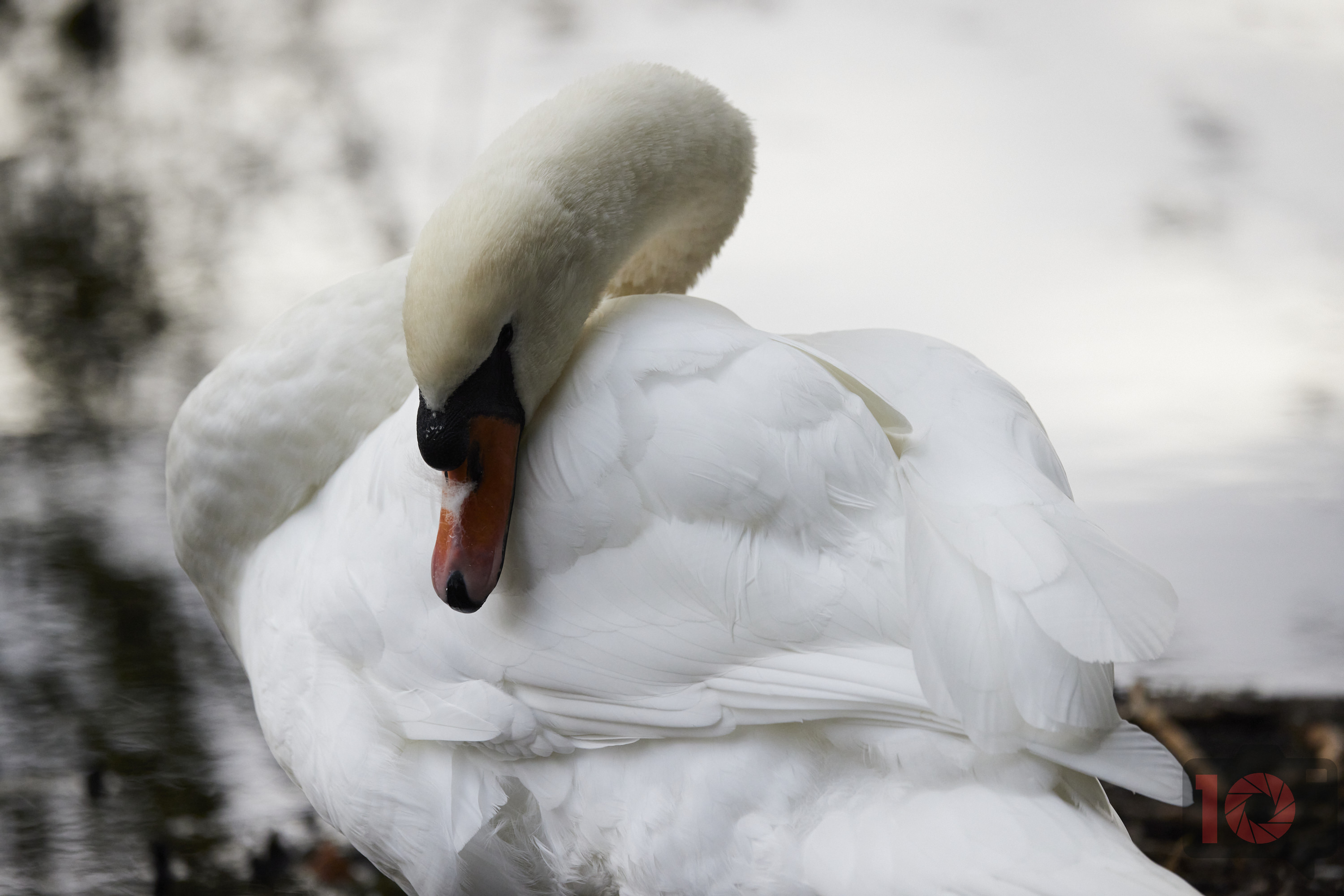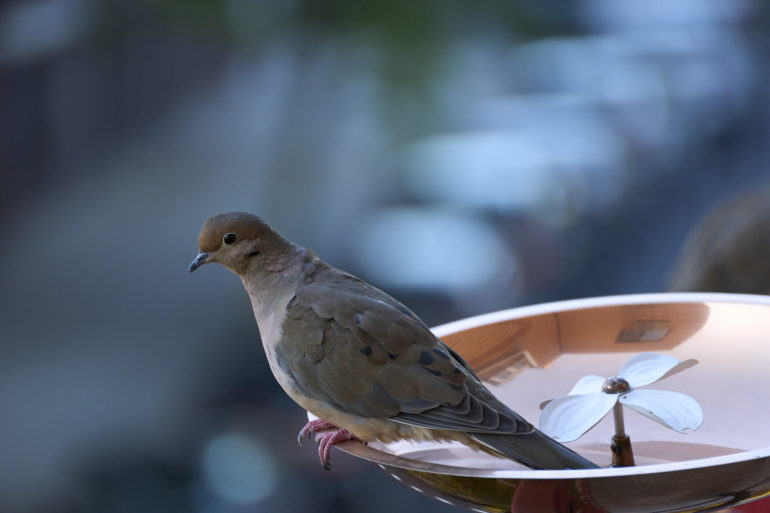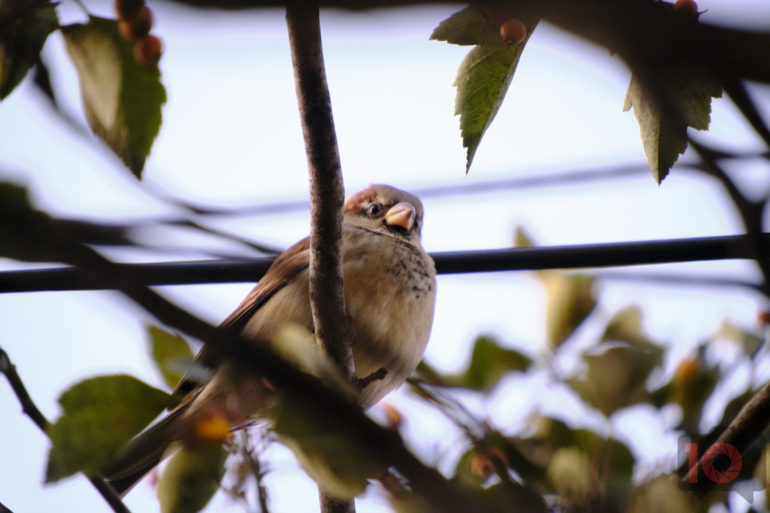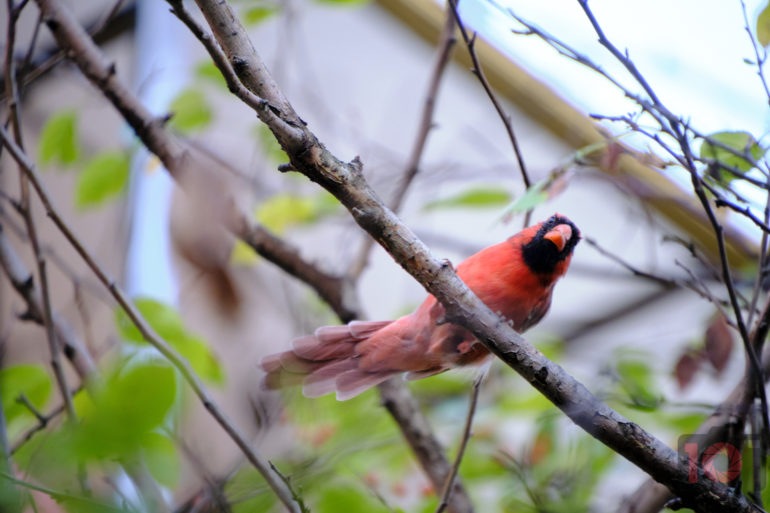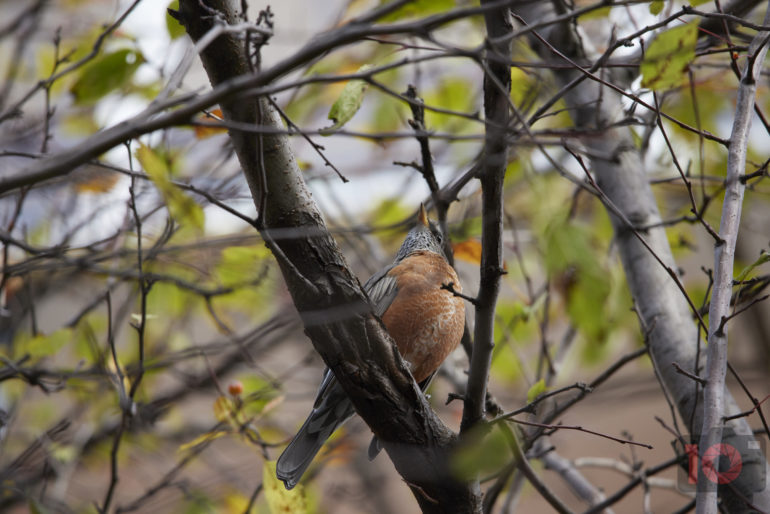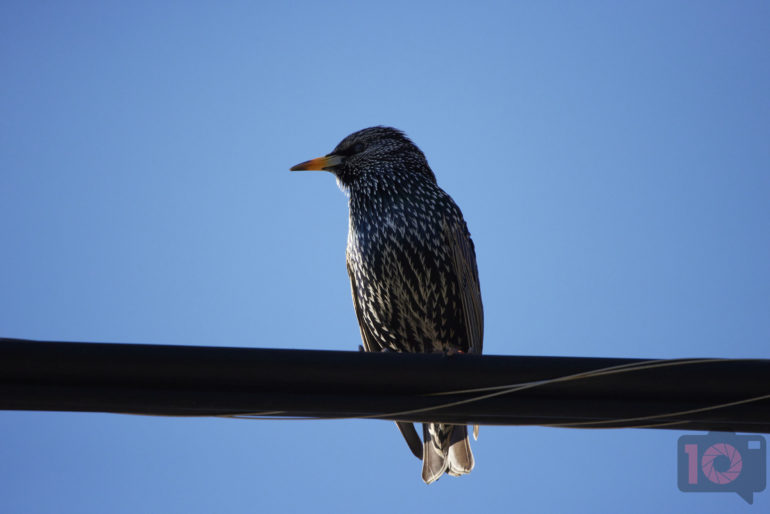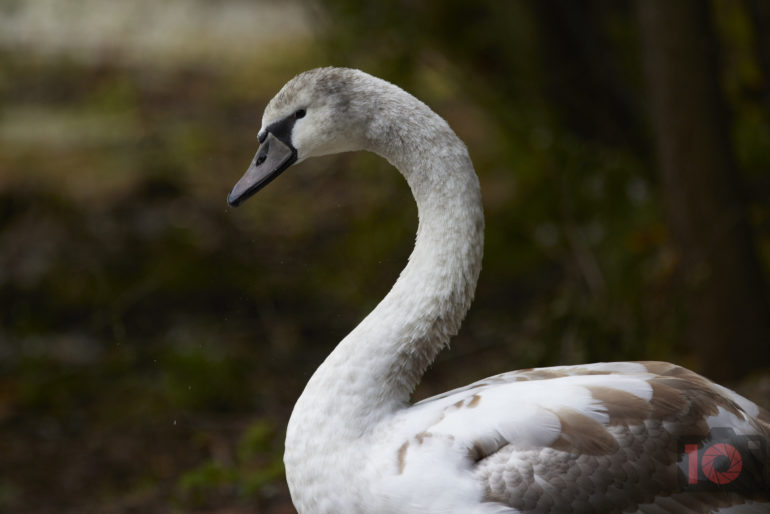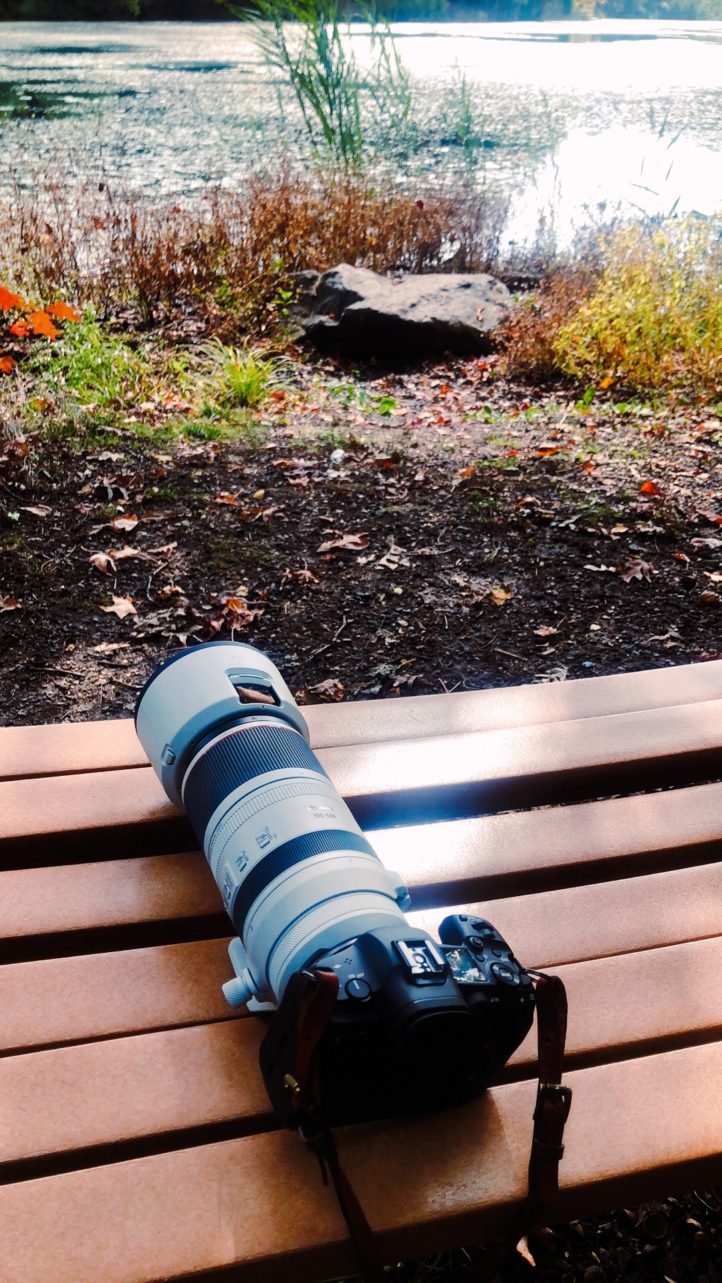In the global pandemic, a lot of people became bird photographers. Tons of those folks took to the countryside, but some of us stayed in big cities. Believe it or not, big cities are great places to photograph birds. In fact, we reviewed a ton of lenses that help to do just that. So we’re giving readers some tips on how to photograph birds in cities based on our experiences.
You can view this article and much more with minimal banner ads in our brand new app for iOS, iPadOS, and Android. And for $24.99/year, you can have a banner ad-free experience.
Table of Contents
Set Up a Local Birdbath or Bird Feeder
It might seem like common sense, right? Instead of going out and hunting for the birds, bring them to you! We’ve seen a few things people do to get birds to come to their windows or close by. Some folks leave bird seed on their windowsill. We’ve also seen folks leave nuts and fruit on their windows or fire escapes. I set up a birdbath on my balcony that I sometimes fill up.
If you don’t have space to do this, look for local parks, lakes, community gardens, etc. One cool idea is to hang a bird feeder from a line of some sort. If your home has an old-school clothes line, try hanging a feeder from there.
The reason to do these things is to find a way to get the birds to come around at different times of the day. Birds are almost always looking for food. So if you can get birds to come to your home or space and pick up some food, you’ve then got an opportunity to photograph them. Ideally, you want the birds higher up from ground level. We’ve seen folks throw rice near trees for the sparrows to eat. This isn’t always safe, and won’t lead to attractive photos. The backgrounds may be way too busy. Putting berries out on plate on a fire escape or out a window sill is a better idea.
Start Early in the Day
The first thing you should know about how to photograph birds in cities is that they’re out and about early in the day. Sometimes you’ll see and hear them around at sunrise. At other times, you’ll see them gather in certain trees around 9am or 10am. You’ll typically get the best light earlier in the day when people are commuting and going to work.
If you’re in a city, there are lots of different places you can look. Most wildlife and birding photography happens in the outdoors and countryside. But the truth is that big cities are where tons of birds go because of the free food sources available. Here in NYC, lots of folks flock (pun intended) to Central Park to photograph birds, but my favorite place is Forest Park in Queens, NY.
Look around for fruit and berry trees. Birds like going to these trees and bushes for a snack. In parks, people might sometimes throw a bagel on the floor. If the squirrels don’t get to it, the birds will.
One of the big problems about photographing birds in cities is that you mostly find pigeons or sparrows. But it’s possible to find other birds if you understand their diet.
According to What Birds are in my Backyard, here are some of the most common birds. We’ve done a bit of research to also add in what they eat.
- Blue Jay: Peanuts and sunflower seeds. Try to make sure the nuts aren’t salted.
- American Robin: Fruits, berries, earthworms.
- Northern Cardinal: Sunflower seeds, grains, fruits.
- American Crow: Grains, nuts, seeds, berries.
- Black-capped Chickadee: Insects, seeds, berries.
- Mourning Dove: Sunflower seeds, cracked corn, and shelled peanuts.
- American Goldfinch: Seeds
- European Starling: Insects, berries, and seeds.
- Song Sparrow: Insects, seeds, berries.
- Downy Woodpecker: Beatle Larvae.
- Red-winged Blackbird: Insects, corn, and wheat.
- House Sparrow: Grains and seeds
- Common Grackle: Seeds, grains, and rice.
- Red-bellied Woodpecker: Nuts, foods, and seeds.
- White-breasted Nuthatch: Seeds and peanut butter mixtures.
- Tufted Titmouse: Sunflower seeds and nuts.
- Dark-eyed Junco: Seeds, weeds, insects.
- Gray Catbird: Insects, holly berries, cherries, elderberries, poison ivy, greenbrier, bay, and blackberries
Walk Around and Notice Their Habits
Birds in a specific neighborhood tend to develop routines and habits. Take notice of them. In my neighborhood, there are specific trees that the cardinals, blue jays, sparrows, wrens and blackbirds like. Further, there are specific places some of the Mourning Doves like sitting. These birds might not visit certain places every day, but they’ll come around maybe a few times a week or so.
Tips for Better Bird Photos
Here are some tips on how to photograph birds in cities.
- If you’re shooting out of a windowsill, get a polarizing filter. It will cut down on the reflections.
- If your camera has a bird autofocus setting, use it. It will consistently give you the best results if you’re photographing a bird in a tree.
- If your camera doesn’t have bird autofocus settings, use the smallest focusing point you can within reason. Try to keep it locked on the bird’s neck if possible, but ideally go for the face. A bird’s neck is often in the same range as their face if the bird doesn’t have a long neck (such as a goose, swan or duck).
- Telephoto lenses are recommended here. The best bird photos have the bird in focus and a blurred background.
- Move slowly and breath steadily.
- You’re going to be pointing your lens and camera up a whole lot. So raise the ISO to 1600-6400 and use image stabilization where you can.
- Try to go for a quiet shutter option. I personally don’t go for silent shutters because rolling shutter can become an issue.
- Some situations call for continuous autofocus while single autofocus is better for other shooting options.
- Use a focus limiter on your lens.
Recommended Lenses and Cameras to Photograph Birds in Cities
Some of our favorite lenses for photographing are the following. We’re recommending these because we’ve reviewed them in the field.:
- Canon RF 100-500mm f4.5-7.1 L IS USM (review here)
- Canon EOS R6 (review here)
- Canon EOS R5 (review here)
- Canon EOS R3 (review here)
- Canon RF 600mm f11 (review here)
- Sony a1 (review here)
- Sony a7 IV (review here)
- Panasonic S5 (review here)
- Tamron 150-500mm f5-6.7 Di III VC VXD (review here)
- Tamron 70-300mm f4.5-6.3 Di III RXD (review here)
- Sony 200-600mm f5.6-6.3 G OSS (review here)
- Olympus OMD EM1X (review here)
- Sony a9 II (review here)
- Fujifilm X Pro 3 (review here)
- Tamron 18-300mm f3.5-6.3 Di III (review here)
- Panasonic 70-300mm f4.5-5.6 (review here)


